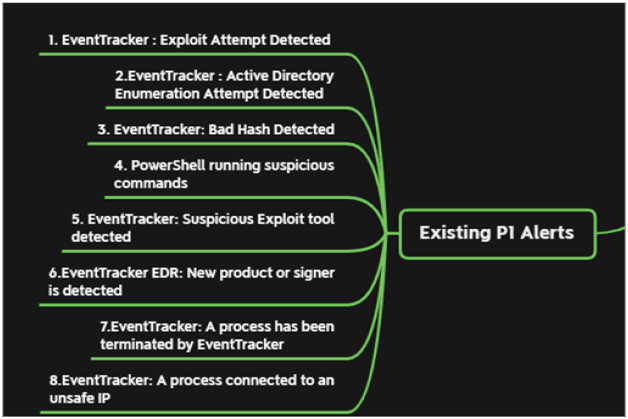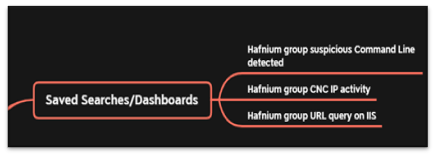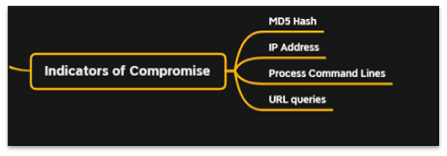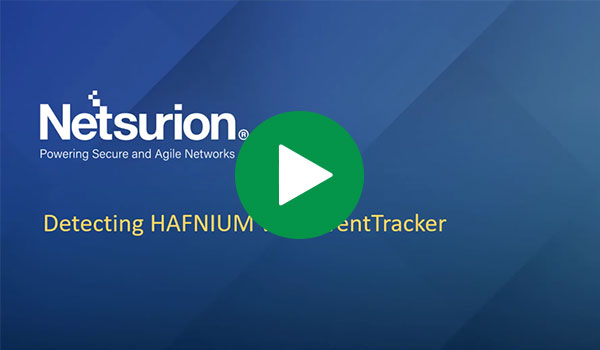Last Updated: April 2, 2021
Cybersecurity and Infrastructure Security Agency (CISA) has issued an alert on active exploitation of vulnerabilities in Microsoft Exchange Server products which are used by Hafnium-attack-group and China Chopper Web Shell attacks, and other Advanced Persistence Threats.
Description
Microsoft has detected multiple zero-day exploits being used to attack on-premises versions of Microsoft Exchange Server in limited and targeted attacks. In the attacks observed, the threat actor used these vulnerabilities to access on-premises Exchange servers which enabled access to email accounts and allowed installation of additional malware to facilitate long-term access to victim environments.
Determined Impact
- Successful exploitation of these vulnerabilities allows an unauthenticated attacker to execute arbitrary code on vulnerable Exchange Servers, enabling the attacker to gain persistent system access, as well as access to files and mailboxes on the server and to credentials stored on that system.
- Successful exploitation may additionally enable the attacker to compromise trust and identity in a vulnerable network.
Why it is Critical?
After successful exploitation activities, Attackers can gain access to email accounts and install additional malware/ scanning tools to remain persisted on the network.
Affected Components
- On-premises versions of Microsoft Exchange Servers primarily on Microsoft Exchange Server 2013, 2016, 2019.
Note: Exchange Online is not affected.
CVE Details
- CVE-2021-26855 allows Unauthenticated attacker to send arbitrary HTTP requests.
The following CVEs allow for remote code execution.
Exploit Tools used by HAFNIUM Group/China chopper variants
Required Actions
If any exploit attempts are observed with lateral movement activities, Netsurion’s SOC recommends the following actions.
- Microsoft has released a new one-click mitigation tool, Microsoft Exchange On-Premises Mitigation Tool, to help customers apply security updates, who do not have dedicated security or IT teams.
- SOC recommends updating on-premises systems immediately. (Reference: Microsoft Security Response Center).
- Validate whether any unknown tasks and services are existing on the Exchange server and disable the unknown tasks, then run a complete anti-malware scan with the updated signature.
- Validate and remove unknown .aspx, .bat and unknown executable files from the following paths and restore the files from an uninfected backup file:
- C:\Exchange\FrontEnd\HttpProxy\owa\auth\
- C:\inetpub\wwwroot\aspnet_client\
- C:\inetpub\wwwroot\aspnet_client\system_web\
- Initiate global password reset operation for exchange accounts if any unauthorized file access observed for Lsass.exe, lsass.dmp and ntds.dit.
- Kindly ensure that the strong password policy is in place.
- Ensure that Multi-Factor Authentication (MFA) is enabled for Exchange account logins.
- Remove unwanted applications from the server.
- Upgrade Operating Systems to the latest version.
- Run vulnerability scans on the host and patch all critical vulnerabilities.
- Ensure that the regular backup operation and proper network segmentation is in place for public-facing servers.
Recommended mitigation steps by CISA:
- Microsoft strongly urges customers to update on-premises systems immediately. The latest version is available on Microsoft Security Response Center.
- Exchange Server 2010 (update requires SP 3 or any SP 3 RU – this is a Defense-in-Depth update)
- Exchange Server 2013 (update requires CU 23)
- Exchange Server 2016 (update requires CU 19 or CU 18)
- Exchange Server 2019 (update requires CU 8 or CU 7)
- (Updated March 4, 2021): If you are running an older CU than what the patch will accept, you must upgrade to at least the required CU as stated above, then apply the patch.
- (Updated March 4, 2021): All patches must be applied using administrator privileges.
- Restrict untrusted connections to port 443 or set up a VPN to separate the Exchange Server from external access; note that this will not prevent an adversary from exploiting the vulnerability if the attacker is already in your network.
- Block external access to on-premises Exchange.
- Restrict external access to OWA URL:/owa/.
- Restrict external access to Exchange Admin Center (EAC) aka Exchange Control Panel (ECP) URL:/ecp/.
(Updated March 4, 2021): Disconnect vulnerable Exchange servers from the internet until a patch can be applied.
Detection Mechanism (If patches not applied)
Existing P1 Alerts:

- Netsurion: Exploit Attempt Detected will be triggered while net user command used for copying user details to remote files/folders or lsass.dmp file accessed through sys internal tools.
- Netsurion: Active Directory Enumeration Attempt Detected will be triggered when active directory enumeration related tool or command executions observed.
- Netsurion: Bad Hash Detected will be triggered when a known exploit tool/executable file with VirusTotal reputation score of five (5) and above.
- PowerShell running suspicious commands will be triggered if any encoded commands or download strings are observed.
- Netsurion: Suspicious Exploit tool detected helps in identifying known exploit tools.
- Netsurion EDR: New product or signer is detected will be triggered when a new product or signer detected during the first time launch of malicious tools.
- Netsurion: A process has been terminated by Netsurion will be triggered when an identified bad Hash component launch stopped by Netsurion agent based on the unsafe list.
- Netsurion: A process connected to an unsafe IP will be triggered when a connection observed to unsafe IP addresses which are known to be involved in Command-and-Control server.
Monitoring Plans: Alert Monitoring, Saved Searches and Dashboards:
Alert Monitoring
- New real-time alert [Netsurion: Hafnium group activity detected] has been created to monitor known patterns with Hafnium-attack-group and China Chopper Web Shell attacks.

- Saved Searches/Dashboards has been created to identify the known patterns discovered with Recent Exchange server exploits.

Indicators of Compromise

- Netsurion Threat Center has been updated with Identified Bad MD5 Hash Values and IP addresses to detect the IP address communication and terminate process launches based on the unsafe list.
| IOC Type | Value |
|---|---|
| MD5 | 4b3039cf227c611c45d2242d1228a121 |
| 2C79376B314535CEC6EB026E76FB7BCE | |
| 9b02dd2a1a15e94922be3f85129083ac | |
| e438712e336982548b884cbfbfee6c9e | |
| 8aea2ae91cc084731a08aa231e79a430 | |
| 7a6c605af4b85954f62f35d648d532bf | |
| c2d8c7a741b68b227281e391f8f6f7d2 | |
| 79eb217578bed4c250803bd573b10151 | |
| cdda3913408c4c46a6c575421485fa5b | |
| 0e55ead3b8fd305d9a54f78c7b56741a | |
| c6eeb14485d93f4e30fb79f3a57518fc | |
| f2e22df5e284587dc36f8041129af391 | |
| aef2ae9b36989bab8818696de5ccd5e7 | |
| e912f273e629bf974a29213b6427d02b | |
| 4ef04cba6bec2c3a164b9b755efbeb1c | |
| fe15fc6341baad2a111462854f96a2bc | |
| 5544ba9ad1b56101b5d52b5270421d4a | |
| 12011c44955fd6631113f68a99447515 | |
| 263b49414c6ff7ef241483e56ba3f9fd | |
| 42097da8cfcaa155d2428f1e4798ceaf | |
| 045c9b751db2ab01ff0ebece76804e78 | |
| d6a82b866f7f9e1e01bf89c3da106d9d | |
| 8af476e24db8d3cd76b2d8d3d889bb5c | |
| 74b1fe8003e43195458bcacb0ceff5ec | |
| 36f0f5c88e6f16d95ffbf471d6c7a03e | |
| 9c7268ff2834d14688386c89385bbc8b | |
| 39d0ad83e254ed1a7eade133a00a5264 | |
| 37ce783abd979851f35314d050978a22 | |
| ad3cad7d9bcb68d35484eb63a0b4c928 | |
| 27a79d5d4263c400767ece37dbda2687 | |
| ef4681593128987f357e2c2d1e91230a | |
| e3af60f483774014c43a7617c44d05e7 | |
| 98E445AB15F91DCBAAEFF3AF517F1842 | |
| 819B97326C40F0677C63492451C9B9DD | |
| 354B3C8A54BA3B23C6B899BF5830D777 | |
| 5CFA1868F0112B1F413CCD527F08EACF | |
| 217B7244D8AC1D7604B0848A9A283945 | |
| DA4A376F5F0E771E7AC01AD42FFAFBD0 | |
| 7EEE73ECAB40ACDE73FE763FB1D79658 | |
| 817A6ED8578403B1E56C75D41BDC4881 | |
| C528278654422CB7339DBF9BFC19397A | |
| f8b604ca7aa304a479f2461d1b74e795 | |
| 96c2f4acef5807b54ded4e0dae6ed79d | |
| aa2efe290df3c38c26c70b1f40f69812 | |
| faa5f4def7e037324f5f87239ddead2d | |
| a5f6b6e95ef8a26081259813ca18e17b | |
| 20e8e55625f68ed42a793d76d359a858 | |
| IP Address | 103.77.192.219 |
| 104.140.114.110 | |
| 104.250.191.110 | |
| 108.61.246.56 | |
| 149.28.14.163 | |
| 157.230.221.198 | |
| 167.99.168.251 | |
| 185.250.151.72 | |
| 192.81.208.169 | |
| 203.160.69.66 | |
| 211.56.98.146 | |
| 5.254.43.18 | |
| 80.92.205.81 | |
| 165.232.154.116 | |
| 161.35.45.41 | |
| 45.77.252.175 | |
| 5.2.69.14 | |
| 91.192.103.43 | |
| 188.166.162.201 | |
| 86.105.18.116 | |
| 89.34.111.11 | |
| 154.83.16.122 | |
| 43.254.216.136 | |
| 45.133.119.141 | |
| 45.249.244.118 | |
| 94.177.123.16 | |
| 152.32.174.110 | |
| 1.36.203.86 | |
| 1.65.152.106 | |
| 1.9.2.18 | |
| 103.135.248.70 | |
| 103.212.223.210 | |
| 104.225.219.16 | |
| 108.172.93.199 | |
| 108.61.171.184 | |
| 110.36.235.230 | |
| 110.36.238.2 | |
| 110.39.189.202 | |
| 112.168.90.84 | |
| 113.173.3.225 | |
| 114.205.37.150 | |
| 116.49.101.143 | |
| 117.146.53.162 | |
| 119.197.26.38 | |
| 119.231.129.222 | |
| 121.174.31.220 | |
| 121.176.145.25 | |
| 122.213.178.102 | |
| 123.16.231.247 | |
| 124.5.24.161 | |
| 128.90.21.223 | |
| 139.59.56.239 | |
| 161.35.76.1 | |
| 167.179.67.3 | |
| 170.10.228.74 | |
| 172.105.87.139 | |
| 179.1.65.54 | |
| 182.165.53.4 | |
| 182.18.152.105 | |
| 185.171.166.188 | |
| 185.173.235.172 | |
| 185.173.235.54 | |
| 185.224.83.137 | |
| 185.65.134.165 | |
| 185.65.134.170 | |
| 198.50.168.176 | |
| 200.52.177.138 | |
| 201.17.196.211 | |
| 201.208.18.226 | |
| 202.182.118.99 | |
| 209.58.163.131 | |
| 211.177.182.80 | |
| 213.219.235.158 | |
| 218.39.251.104 | |
| 219.100.37.239 | |
| 219.100.37.243 | |
| 219.78.205.63 | |
| 23.95.80.191 | |
| 31.182.197.163 | |
| 31.28.31.132 | |
| 39.123.17.120 | |
| 45.154.2.94 | |
| 46.101.232.43 | |
| 46.23.196.21 | |
| 46.244.29.17 | |
| 49.36.47.211 | |
| 5.189.162.164 | |
| 5.2.69.13 | |
| 58.190.46.175 | |
| 61.82.150.49 | |
| 78.188.104.84 | |
| 78.189.225.136 | |
| 89.147.119.227 | |
| 90.230.190.92 | |
| 121.154.50.51 | |
| 58.126.135.235 | |
| URL Queries on IIS (IIS logging is must) | /ecp/(Random string).js |
| /ecp/DDI/DDIService.svc/GetList | |
| /owa/auth/logon.aspx | |
| C:\inetpub\wwwroot\aspnet_client\ (random file name).aspx | |
| C:\inetpub\wwwroot\aspnet_client\system_web\(random file name).aspx | |
| C:\Exchange\FrontEnd\HttpProxy\owa\auth\(random file name).aspx | |
| web.aspx | |
| help.aspx | |
| document.aspx | |
| errorEEE.aspx | |
| errorEW.aspx | |
| healthcheck.aspx | |
| aspnet_www.aspx | |
| aspnet_client.aspx | |
| xx.aspx | |
| shell.aspx | |
| aspnet_iisstart.aspx | |
| one.aspx | |
| /owa/auth/errorEE.aspx | |
| /owa/auth/errorFE.aspx | |
| /aspnet_client/aa.aspx | |
| hackIdIO.aspx | |
| ckPassPL.aspx | |
| chackLogsPL.aspx | |
| healthcheck.htm | |
| antSword/v2.1 (User agent) | |
| DuckDuckBot/1.0 (User agent) | |
| ExchangeServicesClient/0.0.0.0 (User agent) | |
| Process Command Lines | cmd /c cd /d “C:\inetpub\wwwroot\aspnet_client\system_web\”&id&echo [S]&cd&echo [E] |
| cmd /c cd /d “C:\inetpub\wwwroot\aspnet_client\system_web\”&whoami&echo [S]&cd&echo [E] | |
| cmd /c cd /d “C:\inetpub\wwwroot\aspnet_client\system_web\”&quser&echo [S]&cd&echo [E] | |
| cmd /c cd /d “C:\inetpub\wwwroot\aspnet_client\system_web\”&netstat -anop tcp | grep LISTEN*&echo [S]&cd&echo [E] | |
| cmd /c cd /d “C:\inetpub\wwwroot\aspnet_client\system_web\”® query “HKEY_LOCAL_MACHINE\SYSTEM\CurrentControlSet\Control\Terminal Server\Wds\rdpwd\Tds\tcp” /v PortNumber&echo [S]&cd&echo [E] | |
| cmd /c cd /d “C:\inetpub\wwwroot\aspnet_client\system_web\”&net use * /delete /y&echo [S]&cd&echo [E] | |
| cmd /c cd /d “C:\inetpub\wwwroot\aspnet_client\system_web\”&xcopy \\shared path\ c:\windows\temp\doc\ /S /Y&echo [S]&cd&echo [E] | |
| cmd /c cd /d “C:\inetpub\wwwroot\aspnet_client\system_web\”&rmdir c:\windows\temp\doc&echo [S]&cd&echo [E] | |
| cmd /c cd /d “C:\inetpub\wwwroot\aspnet_client\system_web\”&del /f /s /q c:\windows\temp\x.rar&echo [S]&cd&echo [E] | |
| c:\Windows\debug\\7za.exe -admin@files a c:\Windows\debug\\n.7z c:\Windows\debug\\system c:\Windows\debug\\ntds.dit | |
| C:\Windows\system32\cmd.exe /K c:\windows\debug\(Random single letter).bat | |
| cmd /c cd /d “C:\inetpub\wwwroot\aspnet_client\system_web\”&C:\windows\temp\ps.exe -accepteula -ma lsass.exe C:\windows\temp\lsass | |
| C:\Windows\system32\cmd.exe /K c:\windows\debug\(Random single letter).bat | |
| cmd /c cd /d “C:\inetpub\wwwroot\aspnet_client\system_web\”&taskkill /f /im ncat.exe&echo [S]&cd&echo [E] | |
| cmd /c cd /d “C:\inetpub\wwwroot\aspnet_client\system_web\”&del /f /s /q c:\windows\temp\p3.exe&echo [S]&cd&echo [E] | |
| cmd /c cd /d “C:\inetpub\wwwroot\aspnet_client\system_web\”&tasklist&echo [S]&cd&echo [E] | |
| cmd /c cd /d “C:\inetpub\wwwroot\aspnet_client\system_web\”&systeminfo&echo [S]&cd&echo [E] | |
| “cmd” /c cd /d “C:\inetpub\wwwroot\aspnet_client\system_web\”&C:\windows\temp\procdump.exe -accepteula -ma lsass.exe C:\windows\temp\lsass.dmp&echo [S]&cd&echo [E] |
Reference Details:
- https://us-cert.cisa.gov/ncas/alerts/aa21-062a
- https://www.volexity.com/blog/2021/03/02/active-exploitation-of-microsoft-exchange-zero-day-vulnerabilities/
- https://www.microsoft.com/security/blog/2020/02/04/ghost-in-the-shell-investigating-web-shell-attacks/
- https://www.microsoft.com/security/blog/2021/03/02/hafnium-targeting-exchange-servers/
- https://blog.rapid7.com/2021/03/03/rapid7s-insightidr-enables-detection-and-response-to-microsoft-exchange-0-day/
- https://www.sentinelone.com/blog/sentinelone-and-hafnium-microsoft-exchange-0-days/
- https://us-cert.cisa.gov/ncas/current-activity/2021/03/06/microsoft-ioc-detection-tool-exchange-server-vulnerabilities
- https://github.com/sophoslabs/IoCs/blob/master/Ransomware_BlackKingDom.csv
- https://msrc-blog.microsoft.com/2021/03/15/one-click-microsoft-exchange-on-premises-mitigation-tool-march-2021/
- https://msrc-blog.microsoft.com/2021/03/02/multiple-security-updates-released-for-exchange-server/
- https://techcommunity.microsoft.com/t5/azure-sentinel/web-shell-threat-hunting-with-azure-sentinel/ba-p/2234968
- https://www.picussecurity.com/resource/blog/ttps-hafnium-microsoft-exchange-servers
- https://symantec-enterprise-blogs.security.com/blogs/threat-intelligence/microsoft-exchange-server-protection
- https://github.com/picussecurity/picuslabs/blob/master/Microsoft%20Exchange%20Vulnerabilities/all_vendor_spesific_content.csv
- https://github.com/microsoft/CSS-Exchange/tree/main/Security
